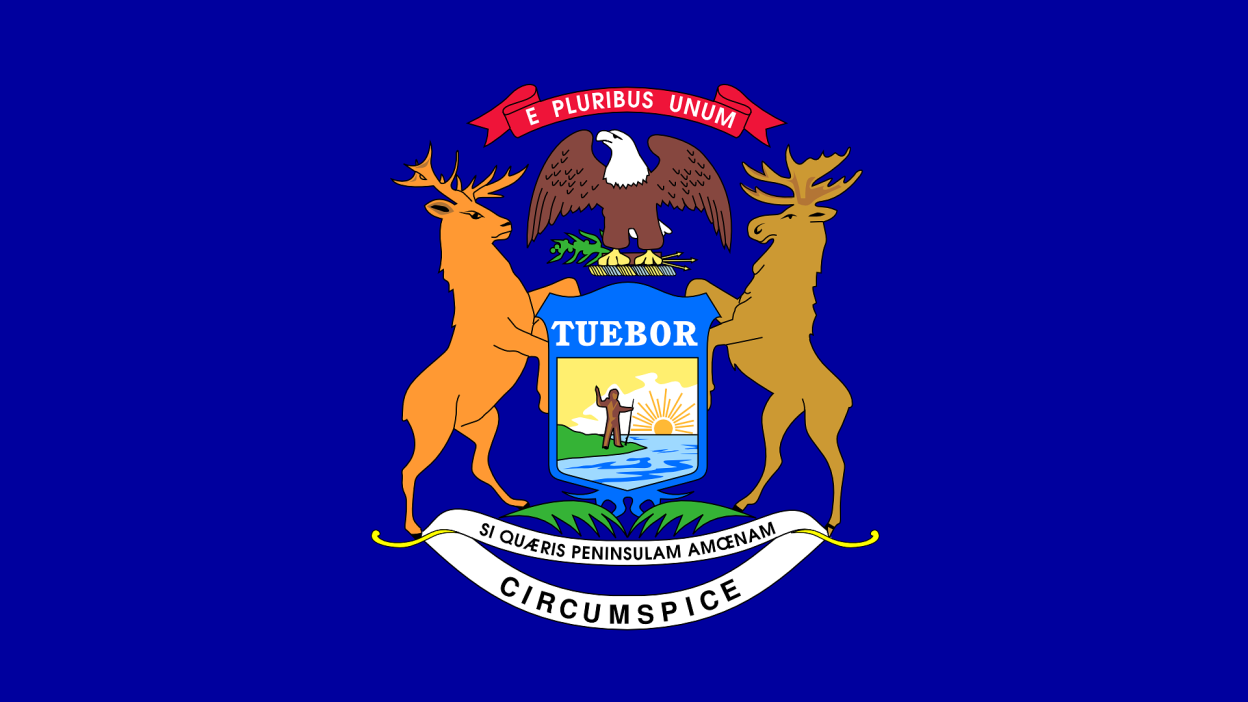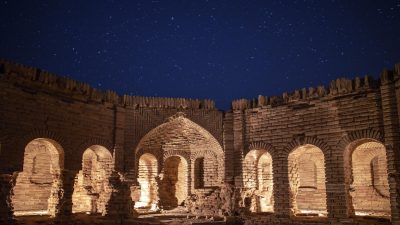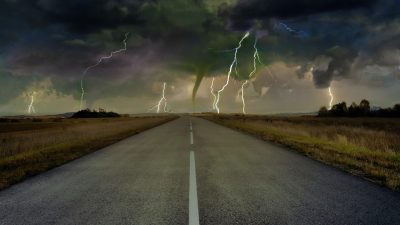The 1981 Thumb Fire Disaster And The Unheeded Warnings Of A Future Wildfire
1. A Firestorm in the Making: What Led to the 1981 Michigan Thumb Fire?
The 1981 Thumb Fire remains one of the most destructive wildfires in Michigan’s history, devastating farmlands, forests, and entire communities in a matter of hours. The origins of this catastrophe were rooted in a combination of extreme weather conditions and human oversight.
In early September 1981, Michigan’s Thumb region—which includes Huron, Tuscola, Sanilac, and Lapeer counties—was experiencing a severe drought. The lack of rainfall had left the landscape bone-dry, making vegetation highly flammable. Combined with high temperatures and dangerously low humidity levels, the region had unknowingly transformed into a tinderbox waiting to ignite.
What made the situation worse was the strong winds, blowing at speeds of up to 35 mph, which provided the perfect fuel to spread even the smallest spark. Whether the fire was triggered by a careless human act or a natural ignition source remains uncertain, but one fact is clear—once the flames started, there was no stopping them.
2. A Raging Inferno: How the Fire Spread Across the Thumb Region
As soon as the fire began, it moved with terrifying speed, overwhelming emergency services and leaving residents with little to no time to react. Unlike smaller, more contained wildfires, this one quickly became a multi-county disaster, engulfing vast stretches of land in minutes.
The strong winds carried embers over long distances, causing multiple fires to ignite simultaneously. Firefighters were outnumbered and under-equipped, struggling to battle flames that leapt from tree to tree, farm to farm. Reports indicate that in some places, the fire was advancing at speeds of 20 feet per second, making escape nearly impossible for those in its path.
The scale of destruction was immense—homes burned to the ground, entire fields were left smouldering, and livestock perished. The Thumb region, known for its agricultural significance, was reduced to a blackened wasteland. For the residents, the only option was to run, leaving behind everything they owned.
3. The Human and Economic Cost: A Disaster by the Numbers
- Casualties and Injuries:
While no official fatalities were recorded, dozens suffered severe burns and smoke inhalation. The emotional toll on survivors was equally devastating, with many experiencing trauma and long-term psychological distress. - Acres of Land Destroyed:
The fire consumed a staggering 138,000 acres of land, wiping out large sections of forests, farmlands, and residential areas. - Property Loss:
More than 300 homes and 400 farm structures were completely destroyed, leaving families homeless and financially crippled. - Financial Impact:
The disaster led to millions of dollars in economic losses, with farmers, business owners, and residents struggling to recover. Many insurance claims were delayed or denied, adding to the frustration. - Emergency Response:
Fire crews worked tirelessly, but their efforts were hindered by poor coordination, lack of resources, and the sheer speed of the fire’s spread.
4. A Living Hell: First-Hand Accounts of the Fire’s Wrath
For those who lived through it, the 1981 Michigan Thumb Fire was a nightmare they would never forget. Survivors recalled walls of fire approaching faster than they could escape, with thick black smoke making it nearly impossible to breathe.
One resident from Sanilac County, which was hit particularly hard, described the terrifying experience:
“The flames were everywhere. The heat was unbearable, and we could barely see through the smoke. We ran for our lives, but when we came back, everything was gone—our house, our fields, even the barns. Just ash and silence.”
Firefighters, despite their valiant efforts, faced near-impossible odds. One responder later shared:
“We were fighting a losing battle. The fire moved too fast, and the wind worked against us. We had to choose between saving homes and saving lives. It was the hardest decision of my career.”
5. Ignored Warnings: Could This Disaster Have Been Prevented?
Although Michigan had witnessed devastating wildfires in the past, such as the 1871 and 1950 fires, lessons from history were overlooked.
Fire experts had repeatedly warned about the rising fire risk due to climate patterns, deforestation, and poor fire management practices. However, the state’s fire prevention strategies were outdated, leaving communities vulnerable.
Among the ignored recommendations were:
- Stricter regulations on land clearing and controlled burns
- Improved early warning systems for rural communities
- Better coordination between emergency services and government agencies
Had these precautionary measures been taken seriously, the disaster could have been mitigated or even prevented. Instead, Michigan was left to deal with one of its worst wildfires in modern history.
6. A Scorched Earth: The Environmental Aftermath of the 1981 Fire
Beyond the immediate destruction, the long-term environmental damage caused by the fire was catastrophic.
The loss of 138,000 acres of forest and farmland meant that:
- Entire ecosystems were wiped out—wildlife habitats were lost, and countless animals perished.
- Soil quality deteriorated, making farming difficult for years to come.
- Water sources were contaminated with ash and debris, affecting both humans and animals.
Additionally, the thick smoke and air pollution caused respiratory issues for thousands of people, some of whom suffered long-term health complications.
7. A Government Under Fire: Relief, Recovery, and Public Outrage
- Slow Emergency Response:
Despite the fire rapidly engulfing multiple counties, the government’s response was sluggish. Many residents felt abandoned as they waited for aid that took far too long to arrive. - Financial Struggles for Survivors:
Insurance companies were overwhelmed, and many families waited months—if not years—for compensation. Some never received financial aid, forcing them into bankruptcy. - Political Scandals and Public Backlash:
Instead of taking responsibility, politicians blamed each other for the failures. Public trust in Michigan’s leadership plummeted, with many calling for policy changes and accountability.
8. The Next Inferno: Could Michigan Face Another Thumb Fire?
Wildfires are no longer isolated events—they are becoming more frequent, more intense, and more devastating due to climate change and human activity. The 1981 Thumb Fire may seem like a disaster of the past, but experts warn that history could repeat itself if Michigan does not take fire prevention seriously.
Since 1981, some improvements have been made in fire response strategies, early warning systems, and land management policies. However, these changes may not be enough to prevent another large-scale disaster. Factors contributing to a future wildfire in the region include:
- Rising Temperatures – Global warming has led to hotter summers and more severe droughts, making forests and farmlands highly flammable.
- Stronger Winds and Dry Conditions – Wildfires spread rapidly when dry landscapes meet high wind speeds, which have become more common in the Midwest.
- Expanding Urbanisation – As housing and infrastructure expand into rural areas, more people live in fire-prone zones, increasing property damage and casualties when a fire occurs.
- Inadequate Fire Prevention Measures – Despite lessons from 1981, Michigan’s fire prevention funding remains low, leaving firefighters understaffed and under-equipped.
If the state fails to address these risks, Michigan’s next wildfire could be even deadlier than the Thumb Fire, destroying not just forests, but entire towns. The question remains: Will we act now, or will we wait until disaster strikes again?
9. Lessons from the Ashes: What the 1981 Fire Taught Us
The 1981 Michigan Thumb Fire was a brutal reminder that wildfires do not discriminate—they wipe out homes, farmlands, businesses, and livelihoods in a matter of hours. But what did we really learn from this disaster?
- Wildfires Are Not Just a Western Problem – Many people associate wildfires with California or Australia, but the 1981 Thumb Fire proved that even the Midwest is vulnerable.
- Emergency Preparedness Is Key – Firefighters were overwhelmed in 1981 due to a lack of resources, outdated technology, and poor coordination. Stronger fire response plans could have saved more land and property.
- Financial Support for Survivors Matters – Many victims struggled with insurance claims, government aid delays, and financial ruin. Future disasters need faster recovery assistance for those affected.
- Climate Change Is Making Wildfires Worse – What happened in 1981 was bad, but with today’s climate conditions, a similar fire could be far more destructive.
The biggest lesson? Ignoring the signs of fire risks only leads to bigger disasters. If Michigan wants to prevent another Thumb Fire, it must take wildfire prevention seriously before it’s too late.
10. A Fiery Warning: Will We Heed the Signs, or Repeat History?
The 1981 Thumb Fire was not just a local catastrophe—it was a warning. But did we listen?
Despite the devastation, fire policies remain weak, and climate change has only worsened the risks. If another wildfire were to strike Michigan, would we be better prepared, or would we make the same mistakes?
History shows that disasters repeat themselves when warnings are ignored. Unless Michigan invests in stronger fire prevention, emergency response improvements, and climate action, another Thumb Fire is not just a possibility—it is inevitable.
This is the moment to learn from the past and take action—or we risk seeing another inferno consume Michigan’s lands, homes, and communities.
The question is not if, but when.
5 Short FAQs on the 1981 Michigan Thumb Fire
1. What caused the 1981 Thumb Fire?
The fire was caused by a combination of extreme drought, strong winds, and dry vegetation, turning the region into a fire hazard.
2. How much land was destroyed?
The fire burned through approximately 138,000 acres, devastating forests, farmlands, and entire towns.
3. Were there any deaths?
There were no confirmed fatalities, but many people suffered severe burns, smoke inhalation, and long-term trauma.
4. How did the government respond to the disaster?
The response was slow, and many survivors struggled with delayed financial aid and insurance claims, leaving them to rebuild with little support.5. Could a wildfire like this happen again in Michigan?
Yes—with climate change, rising temperatures, and ongoing droughts, the risk of another massive wildfire is higher than ever.




